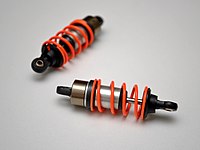
Photo from wikipedia
Abstract Dynamic elements have always enabled humans to create adaptable systems that can adjust to the alternating exterior circumstances. Buildings, as one of the largest man-made objects, during the past… Click to show full abstract
Abstract Dynamic elements have always enabled humans to create adaptable systems that can adjust to the alternating exterior circumstances. Buildings, as one of the largest man-made objects, during the past decades and by the advent of numerous mechanical and electrical devices, have been continuously possessing dynamic components. Dynamic building skins have been recently developed for the main aim of energy control and visual comfort adjustment of the buildings, based on the alternating external conditions. These aims were typically fulfilled by mechanically- or electrically-derived, manual, or automatic systems; but these components require active energy source and control systems; in other words, they are not green-energy-based. Shape memory alloys, such as Nitinol helical springs, have been considered a novel replacement for these systems due to their lighter weight, smaller volume, passive actuation, and lower operating costs. This paper aims to propose a novel dynamic mechanical system for shading purposes, installed on the external side of the building skin, and actuated via the Nitinol helical springs, and by absorbing the solar energy. Initially, the theoretical, geometrical, and numerical formulations of the components and the Nitinol springs are established and then implemented inside a Python script. Further, the obtained numerical results are verified via a proper experimental campaign, designed and controlled by the Arduino microcontroller board and relevant components and sensors. Finally, it has been illustrated that there is a good agreement between the numerical and experimental results.
Journal Title: Building and Environment
Year Published: 2021
Link to full text (if available)
Share on Social Media: Sign Up to like & get
recommendations!